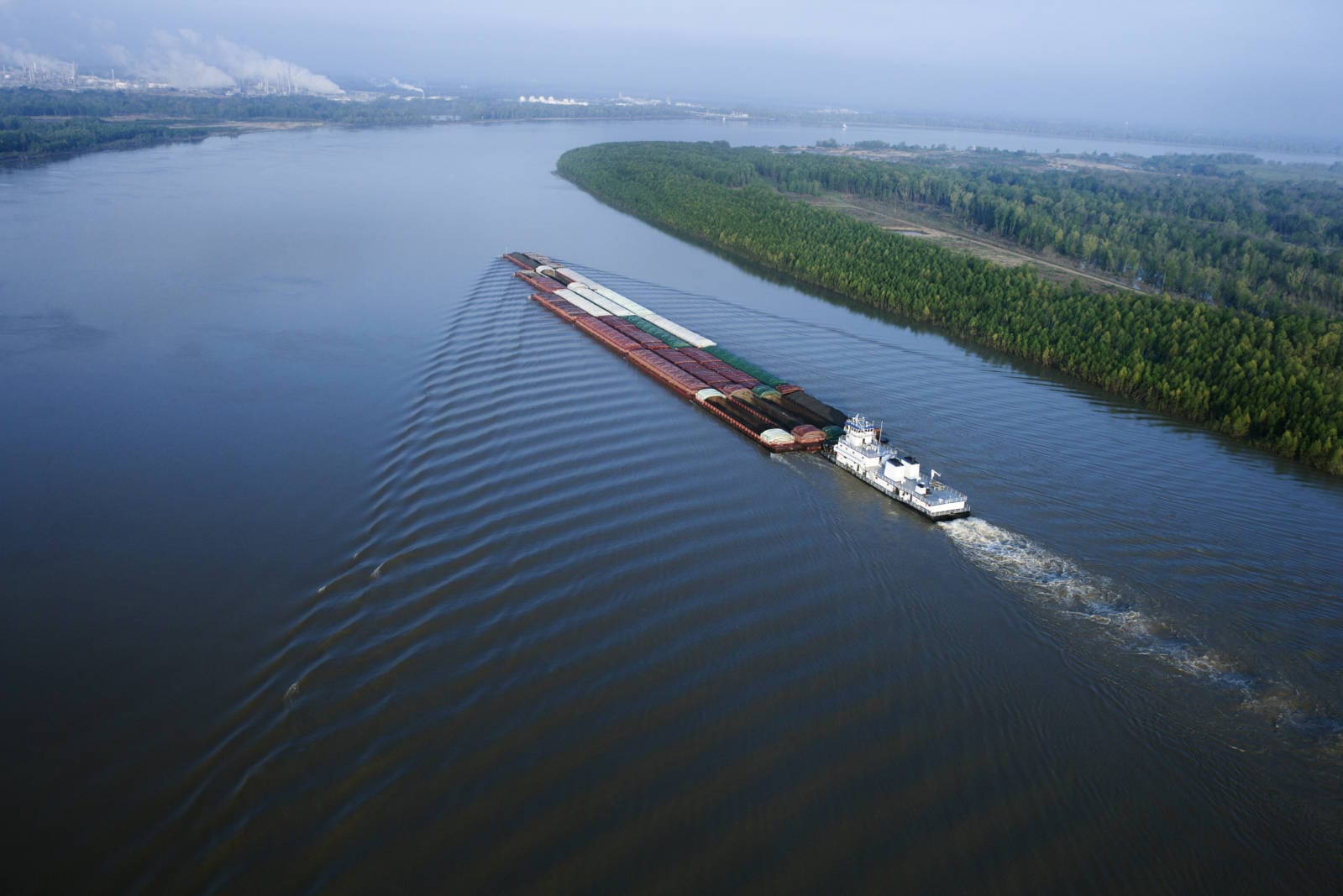The inland Mississippi River system plays a major role in transporting commodities; especially soybeans and corn. Approximately 60 percent of all grain inspected is exported through the Center Gulf, which consists of the U.S. Customs Districts of New Orleans, Louisiana and Mobile, Alabama. The map below shows that the upper Mississippi River, mid-Mississippi River, lower Mississippi River and Missouri River are above flood stage. The upper Mississippi River is above St. Louis, Missouri on the locking reaches of the river. The mid-Mississippi River spans from Cairo to St. Louis. Below Cairo, the lower Mississippi River becomes wider and deeper. The reason for the distinction is the size of a tow configuration that can operate and the amount of product that can be loaded.

Source: USGS and NOAA
For farmers located near the inland Mississippi River system, the export option provides a floor to the cash market. Without the river option, a farmer’s marketing options are to truck the crops to a river elevator below Lock and Dam 15, rail the crops to the Pacific Northwest or Center Gulf, sell to local operations, or keep the crops in storage. The alternatives are not as good as advertised. Trucking crops is expensive, and as the closest river elevator below Lock and Dam 15 quickly books up, the trip to the next river elevator becomes longer and more expensive. While textbooks would say to just switch to the next least expensive transportation mode, the reality is besides track capacity and locomotive constraints, railroads plan labor utilization by export forecasts and assume the river will be open. The rail system cannot handle the volume that is barged without extensive planning and investment. During the low water event of 2012, the railroads indicated that major operational decisions with long-term implications were not going to be made based on an outlier.
The captured supply of corn and soybeans should have the local feeding operations, ethanol plants, and crushing plants in great financial shape to buy, but these operations have limited storage. The farmer must likely wait until the upper Mississippi River reopens to market the crops. A trade deal with China could make exporting crops in the traditional low time period of late May and June much easier, but a China trade deal is still in question.
The reality is the entire U.S. transportation system is already showing signs of strain. The idea that barge volume can be transferred to other transportation modes is unrealistic, even over a long time period. The long-term goal of the U.S Department of Transportation is just the opposite, which is to transfer heavy truckloads to waterways. Railroads are exploring lanes that partner with the waterways. The waterways are a vital piece of the whole U.S. transportation system and its role is expected to expand in the future.
